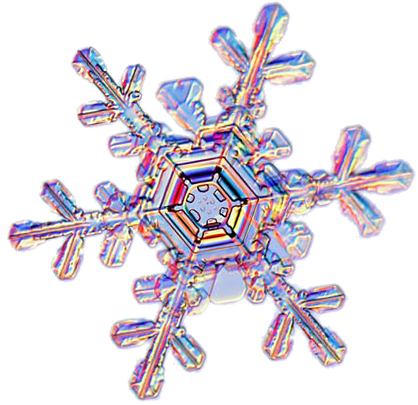 |
|
|
|
I don’t know how on Earth it happened, because lately we’ve been sweltering (relatively speaking) with temperatures up in the seventies down here in Plano, but the other day someone actually brought up that old chestnut about no two snowflakes ever being alike.
Of course you can guess what my immediate reaction to that was.
So after spending a whole afternoon on research and calculation (with very big numbers) and (to be frank) a lot of esti- and guessti-mation not to mention all that colourful language when I noticed that simple mistake back at the beginning and had to start over; I can categorically tell you, once and for all that the answer is definitely ..... maybe.
You see ...
OK ...
Now remember that many of these numbers are going to be really quite fudgerific
So ...
Here goes:
 There are something like one hundred snow storms a year in the United states (and it’s hard enough coming up with data on the States so forget about the rest of the World for the moment---not that True Americans care about the rest of the World anyway). There are something like one hundred snow storms a year in the United states (and it’s hard enough coming up with data on the States so forget about the rest of the World for the moment---not that True Americans care about the rest of the World anyway).
According to the Journal Physical Geography , over the last fifty years or so the average size of a snow storm is 107,380 sq km, producing snow for two to five days.
According to a random site of snow facts , the bloody stuff falls at an average of 2 inches per day when it is actually falling that is---say 5cm.
Snow flakes average 10mm, but they are flattish so say that’s a pile of ten of them.
So multiplying and rounding like Hell, that all works out to the enormous number of about 3 times ten to the 14th (that’s three followed by fourteen zeros) of snow flakes every year.
If this rate is constant for the whole history of the Earth (which I’m sure it can’t possibly be) then that number is extended to around ten followed by 24 zeros. Add another couple of zeros and you’ve got the whole Earth covered!1
Now, as is widely known (Hem! Hem!), snowflakes are six-sided crystals composed of about 10 followed by eighteen zeros of water molecules, and here it all breaks down because I don’t know what constraints act on snowflakes so I can’t factor in the permutations that all those molecules can have.
Is it bigger than ten followed by 26 zeros? Could be. Who knows?
And anyway the whole question is stupidly open ended---do they mean no two perfectly formed hexagonal crystals formed under perfect conditions? The mish-mosh of irregular vaguely crystalline mutant flakes that lurk out there like extras in a horror movie? Powder?! Slush??! Hail??!! Well at that point the sensible scientist probably says hail and farewell to the whole thing.
In fact that statement about no two snowflakes being alike is also foolish at more fundamental levels: consider the fact that at the molecular scale no two anythings are remotely alike---neither peas in a pod nor two pins so why should we single out those poor snowflakes, already suffering the ignominy of their ephemerality, to accuse of uniqueness; or again consider the big assumption the damn thing makes a about the word ‘alike’, I mean all snowflakes are pretty well identical when compared with, say, carrots, or the land surface of the United States, or main sequence stars!
And anyway back in 1988 a snow researcher called Nancy Knight actually published a photo of two virtually identical snowflakes, and that’s good enough for me.
And that finally brings me to put the blame for wasting all your time on this squarely on the activities of that damned William Bentley who made a career out of photographing them and publishing the first suggestion that no two were alike.
Of course down here in Plano we’d think ourselves lucky if we had two snowflakes to rub together and we wouldn’t care what shape they were ...
Cheerio for now
from Richard Howland-Bolton
|
Notes:
1 Of course just as soon as I'd done all my calculations and written and recorded this essay I noticed in one of my sources that I'd completely missed:
"And, she adds, David Phillips, the senior climatologist with Environment Canada, has estimated that the number of snowflakes that have fallen on Earth over the course of time is 10 followed by 34 zeros." Such is ...wossname... life!
|
 |
 |
<-- Go Back |
|
|

| Home | Essays | Notes | Gallery | Miscellany | Contact |
All contents including writing, cartooning, music, and photography unless otherwise specified are
copyright © 1965-2023 howlandbolton.com and Richard Howland-Bolton. All Rights Reserved.
All logos and trademarks on this site are property of their respective owners. | Web work* by 
*as distinct from Wetwork
  |
|
|

